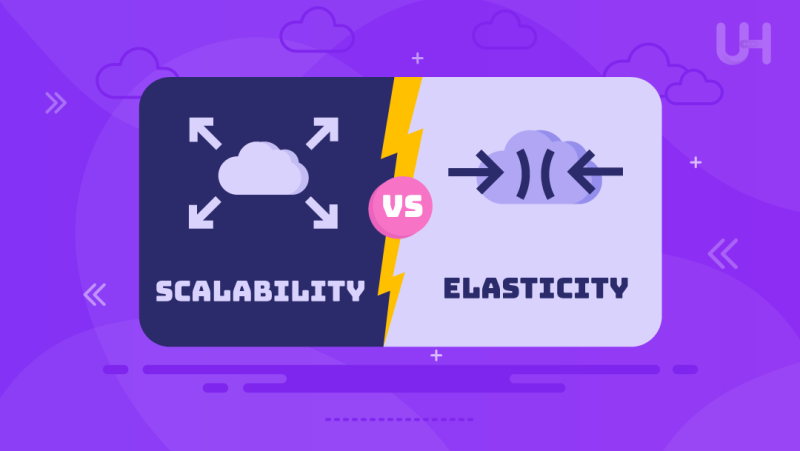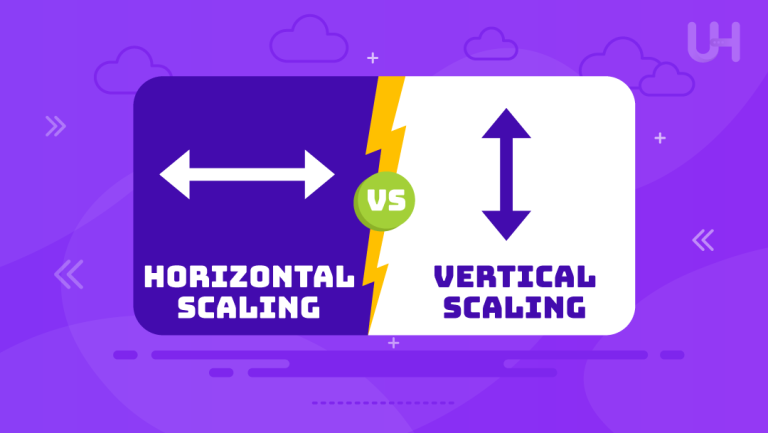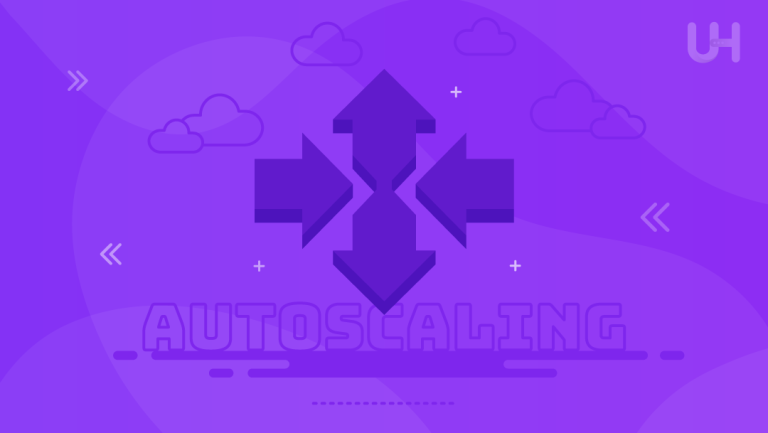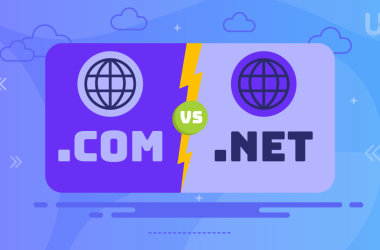Within cloud computing, scalability vs elasticity represents two terms that show their face within the realm of one of those fast-changing worlds. Though these terms have been used somewhat interchangeably, they encompass very different characteristics and functionalities within the environments of clouds.
In this article, we will explain the difference between scalability and elasticity, discuss their respective roles within cloud infrastructure, and discuss how a business can boost its performance using both of these concepts.
What is Scalability?
Scalability in cloud computing means that resources can be added or removed as demands increase or decrease. You do this either by scaling up, also known as vertical scaling, or scaling out, otherwise known as horizontal scaling. Vertical scaling involves the addition of more resources to an already existing machine, like upgrading the CPU or RAM. Horizontal scaling is where you add more machines or servers to the resource pool in order to bear the increasing load.
Microservices architecture is a developmental approach in which the software is split into smaller, independent services, making horizontal scaling a lot easier to achieve. This enables the replication of services across many servers. The ability of each microservice to scale and load balance individually makes it simple to manage growing workloads and traffic.
Benefits of Scalability
- Enhanced Application Performance: Optimizes system response times, leading to faster load times and improved user experience.
- Alignment with Long-Term Business Goals: Enables better data analytics for informed decision-making and strategic planning.
Drawbacks of Scalability
- High Initial Costs: Most of these scalable systems usually require very high initial investments in infrastructure, technology, and resources at the beginning. This may be beyond the reach of many organizations, especially the small ones.
- Complex Architecture: Sometimes, large systems are made to be highly complex. Smooth operations may be put at risk if management, maintenance, and integration become challenging.
What is Elasticity?
Elasticity means a system is capable of automatically scaling out/in depending on the change in demand, and elasticity generally stands for an autoscale-out feature that ensures the availability of resources whenever needed and releases the same whenever the demand goes down. In contrast to scalability, it is far more dynamic and involves far less human interaction.
Elasticity in action would be an eCommerce platform or an online marketplace during the holiday season. A large website should have an elastic infrastructure, which would autoscaling and support the increase in traffic and sales without disruption and automatically scale down when the demand decreases to reduce costs.
Benefits of Elasticity
- Cost Optimization: Elasticity is more affordable in price comparison when comparing elasticity vs scalability.
- Real-Time Adaptation to Demand: Elasticity offers real-time adaption to demand, which is critical for businesses aiming to remain competitive in today’s fast-paced market.
Drawbacks of Elasticity
- Dependence on Automation Tools: The effectiveness of elasticity often hinges on the proper implementation and functionality of automation tools. Their absence or malfunction can hinder the overall elastic capacity of a system.
- Potential Latency During Scaling Events: When scaling resources up or down, there may be a latency period during which users could experience delays. This can impact performance and user experience, especially if scaling occurs in response to sudden demand changes.
Scalability vs Elasticity in Cloud Computing

Elasticity vs scalability in cloud environments is a matter of efficiency and reliability. Scalability concerns the accommodation of long-term growth, adding resources such as computing power and storage to handle increasing demands.
While elasticity allows systems to adapt quickly to short-term fluctuations in workload by rapidly provisioning or de-provisioning resources, scalability does so for long-term ones. These two concepts together mean that cloud infrastructures are able to adapt dynamically to both immediate and future needs.
Cloud Scalability vs Elasticity: Comparison Table
Scalability and elasticity are related concepts in cloud computing, but they are not interchangeable. Below are the key differences between them.
| Feature | Scalability | Elasticity |
| Definition | Ability to handle the increased workload by adding resources | Ability to automatically adjust resources based on demand |
| Approach | Planned and often manual | Automatic and dynamic |
| Time Frame | Typically long-term (weeks to months) | Short-term (minutes to hours) |
| Resource Utilization | Adds resources permanently or semi-permanently | Adds or removes resources quickly as needed, often temporarily |
| Cost Implications | Higher due to permanent resource addition | Cost-efficient due to pay-as-you-go model |
Boost Your Growth with 10Gbps Dedicated Servers!
If you’re searching for the ideal server solution to support your growth plan, look no further than UltaHost’s remarkable 10Gbps Dedicated Servers. They provide the speed, reliability, and flexibility necessary for seamless scalability or elasticity.
Use Cases for Scalability and Elasticity
Let’s explore some use cases to build a better understanding of the difference between cloud scalability vs elasticity:
Use Cases for Scalability
Enterprise applications that experience consistent and predictable growth can greatly benefit from reliable hosting solutions. E-commerce platforms, in particular, need to prepare for seasonal traffic increases to manage heightened customer demand during peak periods. To address these requirements, it is recommended to explore e-commerce hosting services specifically designed to offer stability, scalability, and high performance.
Use Cases for Elasticity
Streaming platforms often experience fluctuations in viewer activity, especially during peak hours when many users tune in simultaneously. To ensure a seamless viewing experience without interruptions, these services benefit from elastic resources that dynamically scale to accommodate increased demand. Many applications experience varying workloads, with peak times requiring more computational power, such as e-commerce sites during sales. Elastic infrastructure enables automatic resource adjustments based on real-time demand, improving performance and efficiency. For businesses needing to effectively manage these demands, reliable WooCommerce Hosting is an ideal solution.
How to Choose Between Scalability and Elasticity?
In choosing between cloud scalability or elasticity, consideration of organization needs and purposes should be set in place. Scalability basically refers to the process of expanding or even reducing resources with the consideration of predictable growth patterns that a business may experience. For a business that does experience steady and well-projected growth, scalability will choose to make efficient management of the said growth with no disruption in operational processes.
In contrast, elasticity is vital for those organizations with dynamic workloads that can vary widely at any moment in time. This said capability can make your infrastructure automatically scale up and down to meet the variable demand required of your resources during high peaks and efficiently reduce resources when things are slow. That way, you’re not overpaying for resources you don’t need.
Eventually, scalability and elasticity depend on which one best suits your growth trajectory and workload variability. These will give insight into making the right decision to meet the operational strategy and financial goals.
Conclusion
Understanding scalability vs elasticity is essential for building a robust cloud infrastructure. While scalability ensures long-term growth, elasticity offers flexibility and efficiency in resource usage. Combining both can help organizations optimize costs, improve performance, and enhance user experiences.
UltaHost’s Cloudflare hosting server enhances website security and speed for effective cloud scalability. With UltaHost, you can achieve seamless elasticity or scalability while optimizing your server infrastructure.
FAQ
What is the key difference between scalability and elasticity?
Scalability focuses on long-term growth, while elasticity adjusts resources in real time.
Which is better for handling sudden traffic spikes?
Elasticity works better for abrupt, unforeseen shifts.
Can scalability and elasticity work together?
Yes, they complement each other in cloud environments.
Which industries benefit from elasticity?
Streaming platforms, seasonal e-commerce, and live event websites.
What are the challenges of implementing scalability?
It requires initial investment and planning.
How does elasticity reduce costs?
By dynamically adjusting resources, ensuring you only pay for what you use.
What hosting services support scalability and elasticity?
Services like VPS Hosting and Cloudflare VPS Hosting.












